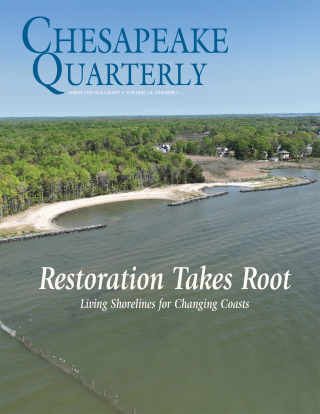Knauss legislative fellowships in Congress help build careers — and they're fun and educational. See our video and fact sheet for details.
R/DIS-4
Assessing the Risk of Interstate Imports, Aquaculture and Stress to Amplify Virus Diversity and Prevalence in Maryland Blue Crabs
Principal Investigator:
Eric SchottStart/End Year:
2022 - 2024Institution:
Institute of Marine and Environmental Technology, University System of MarylandCo-Principal Investigator:
Tsvetan Bachvaroff, Institute of Marine & Env. Tech., UMCES; Mingli Zhao, Institute of Marine & Env. Tech., University of Maryland Baltimore CountyTopic(s):
- Research Projects
Strategic focus area:
Sustainable fisheries and aquacultureDescription:
Rationale: Blue crab harvests and populations are highly variable in Maryland. Viral disease is a possible cause of blue crab mortalities, but little is known about viruses in crabs. Interstate transport of blue crabs may introduce new viruses into the bay.
- Objective 1. Identify new viruses in blue crab with metagenomic sequencing: a. viruses in Chesapeake Bay blue crabs that die in soft-shell production; b. viruses in imported blue crabs that die during transportation.
- Objective 2. Investigate the prevalence of viruses in blue crab populations. a. Conduct a complete survey to investigate the prevalence of known and newly identified virus in Chesapeake Bay blue crabs. b. Conduct a survey to quantify these virus prevalence and intensity in blue crabs that are being imported into the Chesapeake Bay from states in the Gulf of Mexico or Florida Atlantic coast.
- Objective 3. Test the pathogenicity of newly identified viruses
- Objective 4. Outreach to managers, scientists, and industry participants:
- Communicate with scientists and industry at a national conference;
- Communicate with blue crab modelers and managers;
- Communicate with fishermen about safe methods of discarding dead crabs.
Methods: Metagenomics of both RNA and DNA will be used to discover virus genomes in collected crabs. PCR-based tools verify and investigate prevalence. Experimental injections will assess pathogenicity of viruses.
Value to constituents: Managers need to understand causes of crab mortality. Biosecurity in transport and aquaculture is not being addressed by managers.
Outreach: The outreach plan is intended to reach managers and industry practitioners using two main strategies: 1) Presentation to the Chesapeake Bay Stock Assessment Committee and other management bodies.
2) Organize a session for the National Shellfisheries Association meeting on biosecurity of crab transportation and discards. 3) Work with Louisiana Sea Grant on printed outreach to discourage in-water discards."





